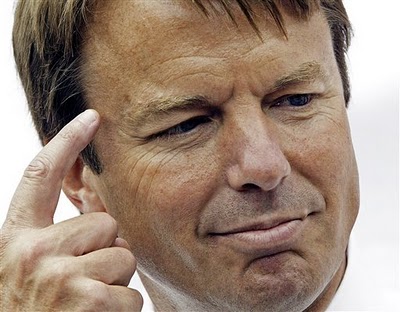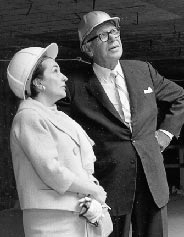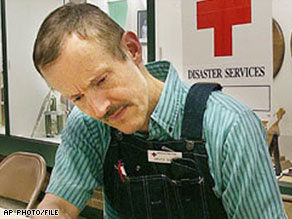Alex Constantine - February 5, 2010
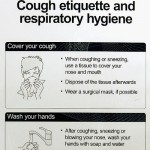 " ... So who was to blame for all this? The finger is being pointed directly at the World Health Organisation. ... Stress [was] placed on families as they were left to decide whether to treat their sick children with powerful antivirals, with all their potential side-effects. The same goes for the untested vaccine which was targeted, in particular, at pregnant women and young children. ... Critics now claim that the drug companies manipulated the WHO into downgrading its criteria for a pandemic so they could cash in on an outbreak. ... These accusations form the basis of an inquiry being conducted by the Strasbourg-based human-rights group, the Council of Europe. Dr Wolfgang Wodarg is a former president of the Council’s health committee and is adamant that the world was misled. ‘WHO advised us falsely,’ he says. ‘They raised a false alarm.’ ... "
" ... So who was to blame for all this? The finger is being pointed directly at the World Health Organisation. ... Stress [was] placed on families as they were left to decide whether to treat their sick children with powerful antivirals, with all their potential side-effects. The same goes for the untested vaccine which was targeted, in particular, at pregnant women and young children. ... Critics now claim that the drug companies manipulated the WHO into downgrading its criteria for a pandemic so they could cash in on an outbreak. ... These accusations form the basis of an inquiry being conducted by the Strasbourg-based human-rights group, the Council of Europe. Dr Wolfgang Wodarg is a former president of the Council’s health committee and is adamant that the world was misled. ‘WHO advised us falsely,’ he says. ‘They raised a false alarm.’ ... "
By Tom Rawstorne
Daily Mail | 06th February 2010
 Only in her bedroom can Samantha Millard find some relief from the almost constant pain that racks her skeletal frame. Her blistered skin is so sore that she has to moisturise it up to ten times a day, and her eyes are so painful and her vision so blurred that she can barely see. The 19-year-old cannot read or watch TV. Instead, she closes two pairs of curtains to block out the light, lies down on her bed and listens to the radio hour after hour.
Only in her bedroom can Samantha Millard find some relief from the almost constant pain that racks her skeletal frame. Her blistered skin is so sore that she has to moisturise it up to ten times a day, and her eyes are so painful and her vision so blurred that she can barely see. The 19-year-old cannot read or watch TV. Instead, she closes two pairs of curtains to block out the light, lies down on her bed and listens to the radio hour after hour.
So much for the teenager's dreams of becoming an air hostess. For Samantha, even going to the shops with her mother is a journey too far.
Samantha's problems started in December when she started to feel under the weather, called her GP's surgery and was told to ring the NHS swine flu helpline. Samantha did as she was bid and, after a brief chat on the phone, was diagnosed as suffering from the H1N1 virus. As is government policy, she was prescribed the anti-viral drug Tamiflu, and her mother collected it for her.
But just three tablets into the course, Samantha suffered an horrific allergic reaction to the medication. She spent four weeks in hospital and has only recently returned home, but has been told it could be months, even years, before she recovers fully. As if what Samantha experienced were not bad enough, her story has a final sting in the tail. Tests carried out while she was in hospital showed that she didn't have swine flu at all and so shouldn't have been prescribed Tamiflu in the first place.
'When we were told that, I couldn't believe it,' says her mother Debbie. 'I went to pick up the Tamiflu and gave it to her - and it nearly killed her. And she didn't even need it.'
The anger felt by Samantha and her family is intense. And while their experience is an extreme one, they are not alone in believing that they are the victims of one of the biggest medical scandals of modern times. For since Christmas, the numbers estimated to have contracted the virus have been falling and now stand at fewer than 5,000 a week. During the outbreak's peak, late last summer, the figure was 100,000. The rate of GP consultations for flu-like illness is now around 12 per 100,000 - lower than normal for this time of year.
Ten months after the first cases of swine flu were identified in Mexico City, British health chiefs this week said that the NHS 24-hour flu helpline would close next Thursday - essentially heralding the end of the pandemic. However, there is a growing feeling that the threat posed by swine flu was grossly exaggerated.
Further, the contention is that this exaggeration was deliberate and was stoked by the pharmaceutical companies that stood to cash in on a world desperate for their drugs.
Here in Britain, the Chief Medical Officer, no less, predicted that 65,000 people could die of the virus, putting the very fabric of society at risk. The Government, desperate to be seen to be doing something, responded in a way that has become alltoofamiliar: pouring out taxpayers' money. In all, the British Government spent £1billion stockpiling anti-viral drugs such as Tamiflu and ordering enough vaccines to give two doses to every man, woman and child.
At the same time, normal medical procedures were abandoned so that call centre workers - unqualified and often very young - could diagnose the sick and dole out medication. But the Doomsday scenario predicted never unfolded. In fact, just 411 people in the UK have so far died as a result of swine flu. Of them, roughly 80 per cent had underlying health problems. That means that fewer than 100 people have been killed by swine flu alone. While each of those deaths is, of course, a tragedy, the question must be asked: how many other people's health has suffered, and will suffer, because of this diversion of funds and energy?
What also should not be underestimated is the stress and strain placed on families as they were left to decide whether to treat their sick children with powerful antivirals, with all their potential side-effects. The same goes for the untested vaccine which was targeted, in particular, at pregnant women and young children.
The sense of relief that the H1N1 virus seems not to have been as virulent as was first feared is fast evaporating. In its place is a sense of betrayal and real concern that the next time a similar virus strikes, formerly trusting citizens will be far less willing to do as they are told.
So, what went wrong? First, we need to examine the role of the National Pandemic Flu Service (NPFS). More commonly known as the swine flu hotline, it was launched last July as the frontline in the Government's battle against the virus. Designed to take pressure off GPs and prevent the spread of the bug, the service was responsible for ' diagnosing' the illness and dispensing anti-virals. Of those who contacted the NPFS between its launch and January 12 this year, 1,748,866 people were authorised to receive the anti-viral Tamiflu. Of this number, more than 1,125,000 patients went on to collect their free prescriptions. A further 15,000 courses of Relenza, the alternative treatmentfor pregnant women, were also handed out. Separately, the Government also embarked on a mass vaccination programme which saw 4.25 million people receive the jab.
At first sight, the figures make impressive reading. But they have come at that huge £1billion cost. The money was spent primarily on purchasing the anti-virals and vaccines - and, make no mistake, they bought more than enough to go around. Responding to warnings that 350 people could die every day in Britain, it is understood that 33 million courses of Tamiflu were purchased. Most of those remain unused.
At the same time, between 90 million and 120 million doses of the vaccine were stockpiled. (It was initially believed that two jabs would be needed to provide protection - something that was subsequently disproved.) In other words, the amount of Tamiflu doled out and the amount of vaccines administered is dwarfed by the amount that stands unused.
As a result, the Government is now desperately trying to renegotiate orders with suppliers, or to sell it cheap to Third World countries, and so recoup some of the money spent. The Government argues that it is easy to be wise with hindsight and that all it was doing was following scientific advice. Further, it claims that if it had done nothing, then more people would have died.
But already experts are pointing to the experience of Poland, the only country in Europe which didn't inoculate against swine flu. There, some 150 people died from the disease - out of a population of 40 million. In December, its prime minister, Donald Tusk, said Poland had the rare 'courage' to refuse a vaccine that he believed had not undergone sufficient testing.
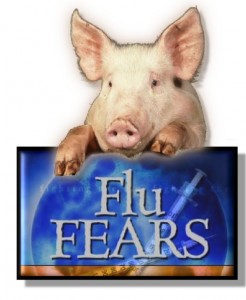 Contrast that with the reaction of the British government. Last summer, Britain had effectively crowned itself Europe's swine flu capital. Indeed, such was the perception abroad of the problem that in 2009 foreign visitor numbers dropped by 5 per cent.
Contrast that with the reaction of the British government. Last summer, Britain had effectively crowned itself Europe's swine flu capital. Indeed, such was the perception abroad of the problem that in 2009 foreign visitor numbers dropped by 5 per cent.
But whether Britain was, in fact, any worse hit than elsewhere is unclear. Research suggests that as many as eight out of ten people diagnosed as suffering from swine flu by the hotline did not have it. That means that more than 800,000 of the one million-plus packets of Tamiflu - which cost around £15 each - were given out needlessly.
Further, doubt has also been cast onto the effectiveness of the Tamiflu anti-virals in treating the H1N1 virus.
While extreme adverse reactions to it, such as those suffered by Samantha, are rare - her case is being investigated by makers Roche - studies have claimed that it only marginally shortens the length of the illness.
Also, what nobody knows is how many patients suffering from potentially fatal illnesses such as pneumonia were misdiagnosed, so missing out on more appropriate treatment.
In fact, scientists are now reporting that swine flu is only one-tenth as virulent as ordinary flu.
So who was to blame for all this? The finger is being pointed directly at the World Health Organisation, which stands accused of announcing 'a false pandemic' in June last year. What was not widely known at the time was that in the spring, the WHO had softened its criteria for defining a pandemic. Instead of the requirement that pandemic strains should cause 'enormous morbidity and death', henceforth all that would be required for 'pandemic status' was ' sustained' transmission in at least two different parts of the world at the same time.
Critics now claim that the drug companies manipulated the WHO into downgrading its criteria for a pandemic so they could cash in on an outbreak. It is alleged that they were desperate to recoup costs, having invested some £2.5 billion developing vaccines to deal with the bird flu pandemic in 2007, which, as it transpired, never happened. These accusations form the basis of an inquiry being conducted by the Strasbourg-based human-rights group, the Council of Europe.
Dr Wolfgang Wodarg is a former president of the council's Health Committee and is adamant that the world was misled. 'WHO advised us falsely,' he says. 'They raised a false alarm. It was stated that this was a flu that could threaten humanity.'
Also giving evidence, Professor Ulrich Keil, a WHO adviser on heart disease, said the decision had led to a 'gigantic misallocation' of health budgets.
'We know the great killers include hypertension, smoking and high cholesterol,' he said. 'Despite this, governments instead wasted huge amounts of money by investing in pandemic scenarios whose evidence base is weak.'
Labour MP Paul Flynn believes the questions raised are legitimate ones: 'We need to know who is making the assessment of risk. Is it based on rational, independent epidemiological evidence, or is it influenced by the pharmaceutical industry for their own purposes?
'The main concern is that the drugs companies and the vaccine manufacturers have their tentacles in every area where decisions are taken - that includes the WHO, governments, civil service, and even charities. 'The overwhelming view now,' says Flynn, 'is that the scare was grossly exaggerated.'
In all, it is estimated that the companies behind the vaccines and anti-virals will scoop a £4 billion windfall from the pandemic. GlaxoSmithKline has revealed that sales of its vaccine reached £835 million in the fourth quarter of 2009. Sales of the drug Relenza have also earned it hundreds of millions of pounds. In the same period, Novartis notched up vaccine sales of more than £800 million, the vast majority coming from H1N1 sales. Meanwhile, drugs firm Roche reported an 8 per cent rise in annual sales last year, helped by sales of the swine flu drug Tamiflu, with profits up 14 per cent to £8.89billion.
These companies vehemently deny having influenced the way in which the swine flu pandemic was managed.
And the WHO is unapologetic. 'Let me state clearly for the record - the influenza pandemic policies and responses recommended and taken by WHO were not improperly influenced by the pharmaceutical industry,' said Dr Keiji Fukuda, the WHO's top flu expert. 'We do not wait until (these outbreaks) have developed and we see that lots of people are dying. What we try to do is take preventive actions. If we are successful, no one will die, no one will notice anything.'
Further, scientists warn that it is far too early to say that the threat from the H1N1 virus is over. They warn that a subsequent wave could strike, with more devastating impact.
For this reason, they are insisting that people continue to be vaccinated.
'When the virus returns in the 2010 flu season, those who develop complications or die will be doing so from a vaccinepreventable disease,' insists the Chief Medical Officer, Professor Sir Liam Donaldson. But with a growing perception that the scientists have cried wolf one too many times, the fear is that people will be less inclined to follow such advice.
And in Britain there is a nagging worry that when it comes to managing a crisis, the Government simply cannot be relied upon. This view is captured in a letter in a national newspaper written by a certain Gordon Stockley of Chester. In January, as Britain ground to a halt in the snow, he summed up the feelings of many: 'You report that the country has grossly overstocked on swine flu medication. What a pity those responsible were not also in charge of ordering road salt.' A rare moment of levity after what, for many, has been a worry-filled winter.
http://www.dailymail.co.uk/news/article-1248878/SPECIAL-INVESTIGATION-The-men-killing-swine-flue-wasted-1bn-exposed-harmful-drugs.html

